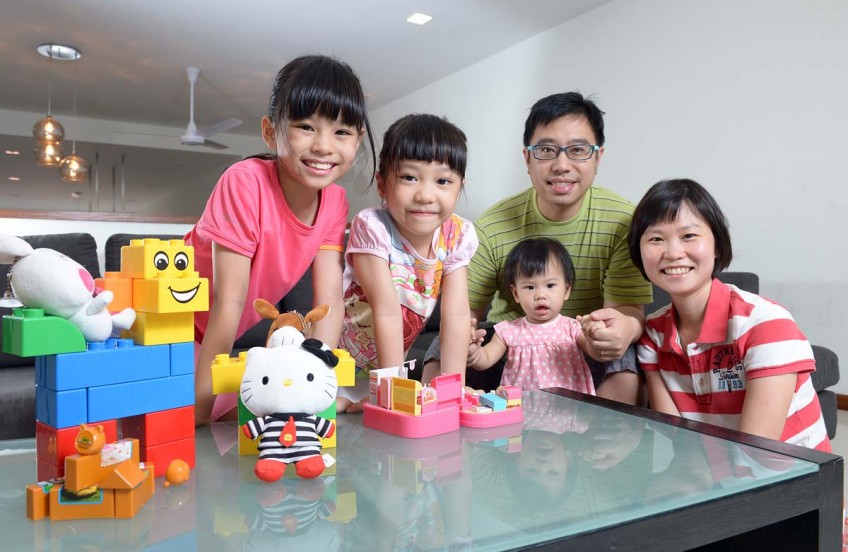'Time has come' for woman general

She made history last night by being appointed the first female general in the Singapore Armed Forces. Ronald Loh speaks to Colonel Gan Siow Huang, 40, who will assume the rank of Brigadier-General on July 1.
HOW DO YOU FEEL ABOUT MAKING HISTORY AS SINGAPORE'S FIRST WOMAN GENERAL?
I am truly honoured that the Singapore Armed Forces (SAF) recognised my abilities through this promotion.
When I joined 22 years ago, I was mainly interested in a career that would offer adventure, challenges and be meaningful.
I didn't expect to become the first woman general. But I don't think the promotion is about sending signals to recruit women to join the SAF.
It's not that the SAF did not want to have female generals in the past, but that we just had to wait for one who's up to the job and ready.
And I think the time has come.
DO YOU FEEL ANY PRESSURE CARRYING THE WEIGHT OF ASPIRATIONS OF WOMEN IN THE SAF?
A little, I guess. But I try not to let that affect me.
The most important thing is that I continue to put in my best and live up to tasks that are given to me.
WHAT IS ONE OF YOUR MORE CHALLENGING TIMES AS A WOMAN MILITARY COMMANDER?
It was when I was expecting my second child and serving as the commanding officer (CO) of the Republic of Singapore Air Force's 203 squadron between 2006 and 2008.
I was a little worried because as a CO, you are in charge of the mission of the whole squadron.
But with several months of planning and arrangements made with the deputy commander and officers-in-charge beforehand, everything turned out very well.
WHY HAS IT TAKEN SO LONG FOR A WOMAN TO BECOME A BRIGADIER-GENERAL?
I think women entered this game late. It was only in 1993 that the SAF seriously started to look at and bring in talent, and to develop woman leaders. Back then, the SAF also did not know how far women could go.
In the 1990s, we didn't have many woman COs in the Army, Navy and Air Force. Over time, when women in different jobs and vocations did well, confidence was gradually built.
The SAF is also a competitive environment with many high achievers.
YOU HAVE THREE DAUGHTERS. HOW DID YOU MANAGE TO LOOK AFTER THEM AND STILL REACH WHERE YOU ARE TODAY?
It was quite a tough journey. I've been quite lucky. I get a lot of family support. My parents-in-law, both retirees, are fantastic as they treat me like their daughter and take care of my children in the day.
My husband (who works in the private sector) also has been very understanding. Being a former Navy serviceman, he knows the importance of my job and he chips in whenever he has to.
Family support is absolutely critical. It's not something that I can take for granted. I'm also fortunate to have had very supportive colleagues, bosses, peers.
I have benefited from SAF's family-friendly policies. Most of all, I think it's the mindset of the bosses, of the colleagues, how receptive they are.
HAVE YOU CONSIDERED TAKING A BACKSEAT TO SPEND MORE TIME WITH YOUR FAMILY?
Yes, many times. I envy my girlfriends who take care of their families full-time and can spend time with their kids. At some point, I probably have to.
My parents-in-law are cancer survivors. When they are unable to take care of our kids, my husband or I then have to make a really tough choice. To me now, coming to work every day is a bonus. I want to make the most of every day.
5 THINGS ABOUT COL GAN
1 Colonel Gan Siow Huang was among the first four women to receive the SAF merit scholarship in 1993.
2 After graduating from the London School of Economics, she drafted policies and commanded the Republic of Singapore Air Force's 203 squadron and Air Surveillance Control Group.
3 Col Gan met her husband, Mr Lee Jek Suen, then a naval officer studying in Britain on an SAF scholarship, in 1994. They got married in 1998.
4 They have three daughters - Ella, 12, Emma, eight, and Eleanor, three.
5 Col Gan is the current head of SAF's joint manpower department. She is also something of a poster girl for the SAF's recruitment campaign for women.

This article was first published on June 27, 2015.
Get The New Paper for more stories.